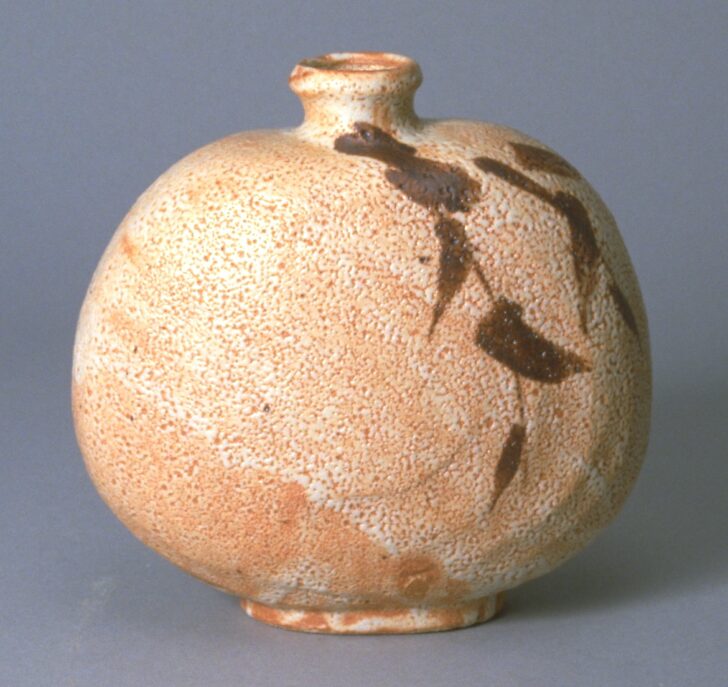Shino ware flask-shaped bottle with bamboo design
Takuo Katô

Description
5. Katô Takuo
Japan, 1917–2005
Shino ware flask-shaped bottle
Showa period (1926–1989)
circa 1958
Stoneware with white feldspathic glaze and iron underglaze painting
Museum purchase, 1963/2.69
(Turning Point exhibition, Spring 2010)
Shino ware was first developed in the sixteenth century, in direct response to the exploding market for tea ceremony vessels. Potters in the mountains of Mino discovered a new vein of clay and developed new glaze formulas, especially favoring the porous, milky white feldspathic glaze seen here. When thinly applied, the iron in the glaze stains it red, giving it a much-admired "scorched" effect.
Katô Takuo was one of the most prominent studio potters of the twentieth century, as well as an astute student of ceramic history. Katô demonstrates here his control of Momoyama Shino glazing and firing techniques. The bottle shape, on the other hand, is not typical of Shino ware; by putting the two together, Katô proclaims his own creativity and independence from models.
Exhibited in "Japanese Costumes & Ceramics, Past & Present," October 2001-February 2002. Maribeth Graybill, Senior Curator of Asian Art
Subject Matter:
The flask bottle is perhaps intended to be displayed by itself, but not for practical use. The bamboo leaves are painted with quick brushstroke.
Physical Description:
Flask-shaped bottle with short, narrow neck. Bamboo leaves design in brown color is applied on one shoulder toward the bottom. The porous surface of white glaze shows the orange color of the clay. The spout is narrow and has an elevated rim. The foot is short and glazed.
Usage Rights:
If you are interested in using an image for a publication, please visit https://umma.umich.edu/request-image/ for more information and to fill out the online Image Rights and Reproductions Request Form.